Embed presentation
Downloaded 28 times


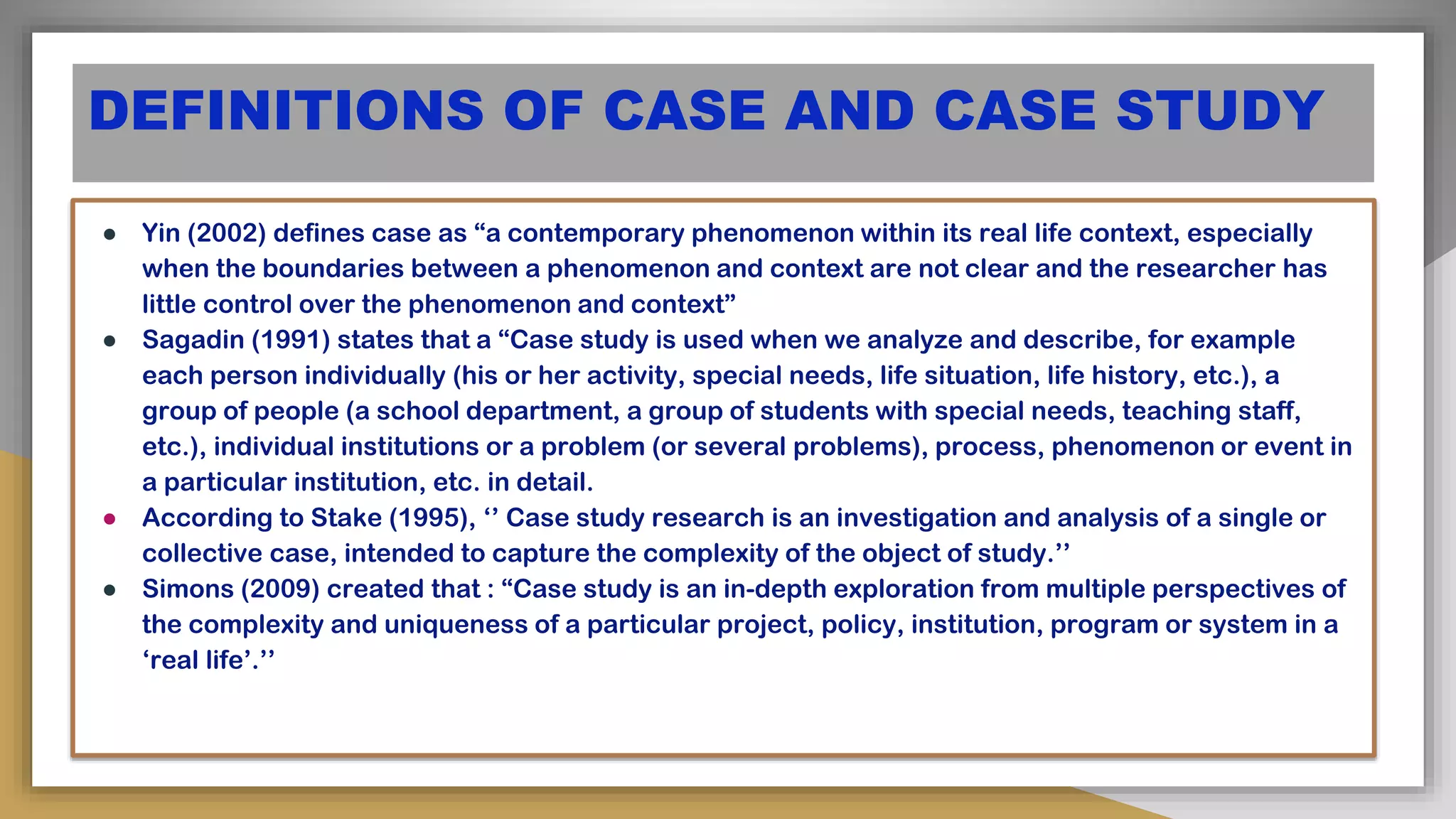


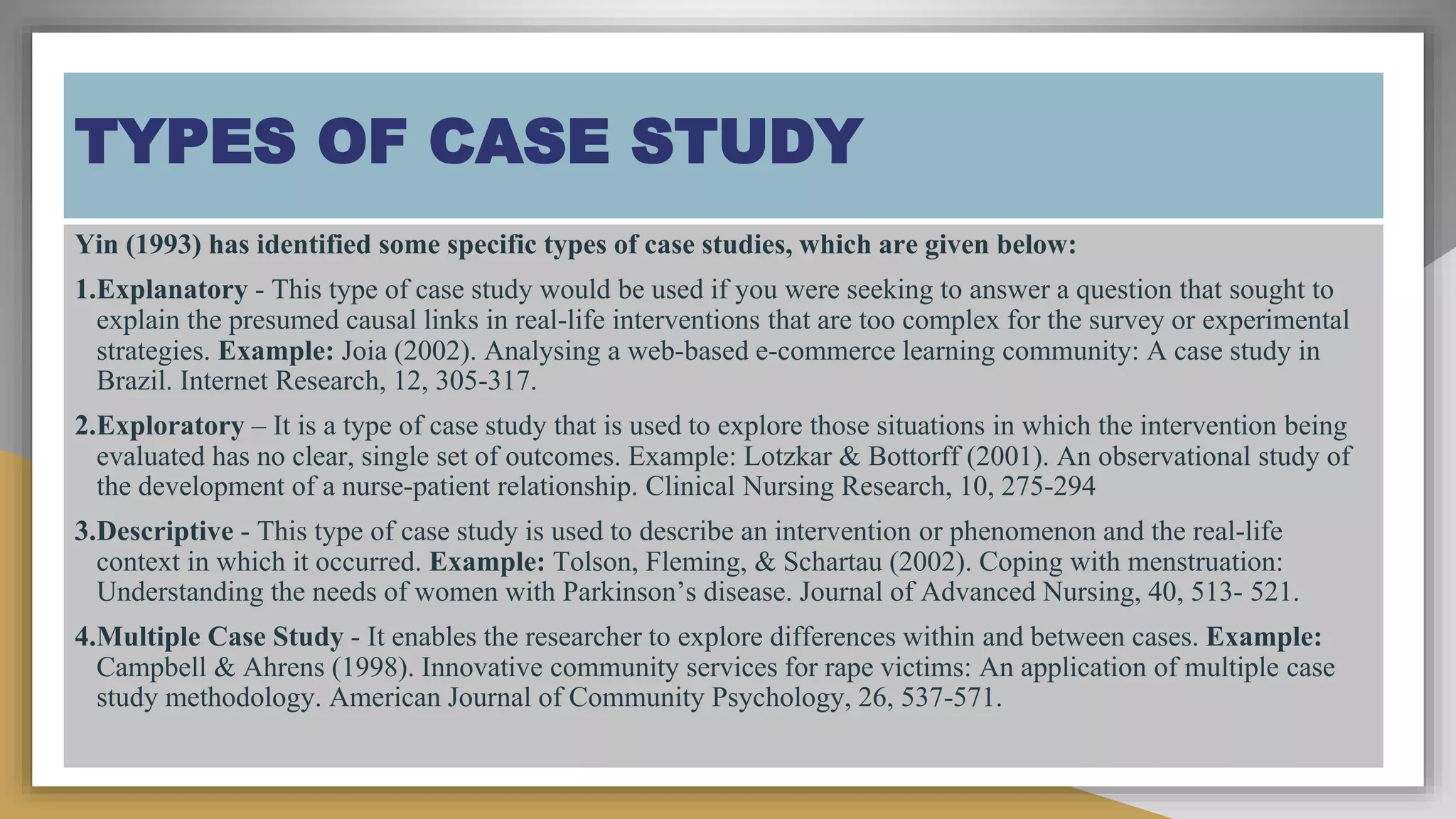






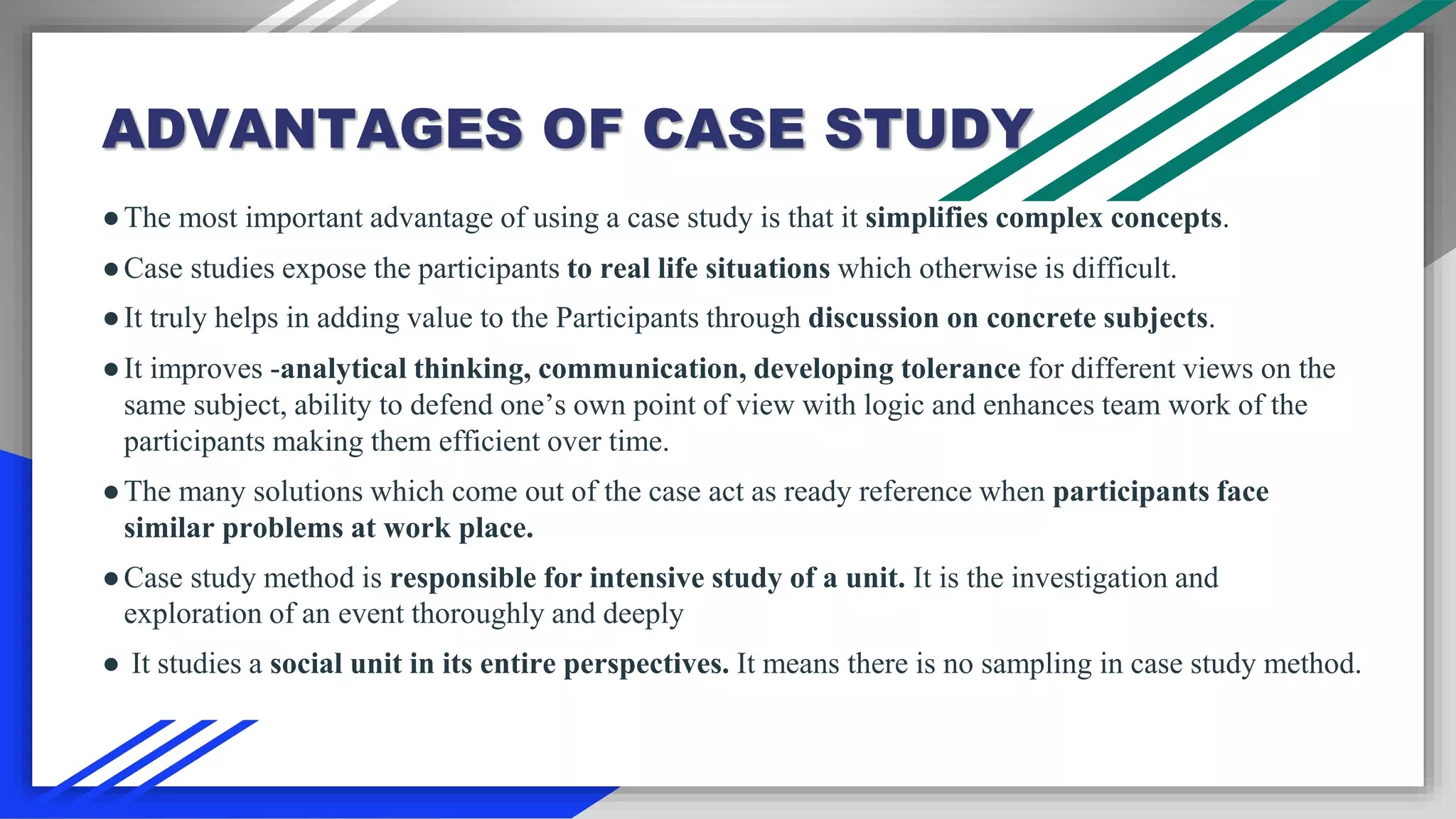


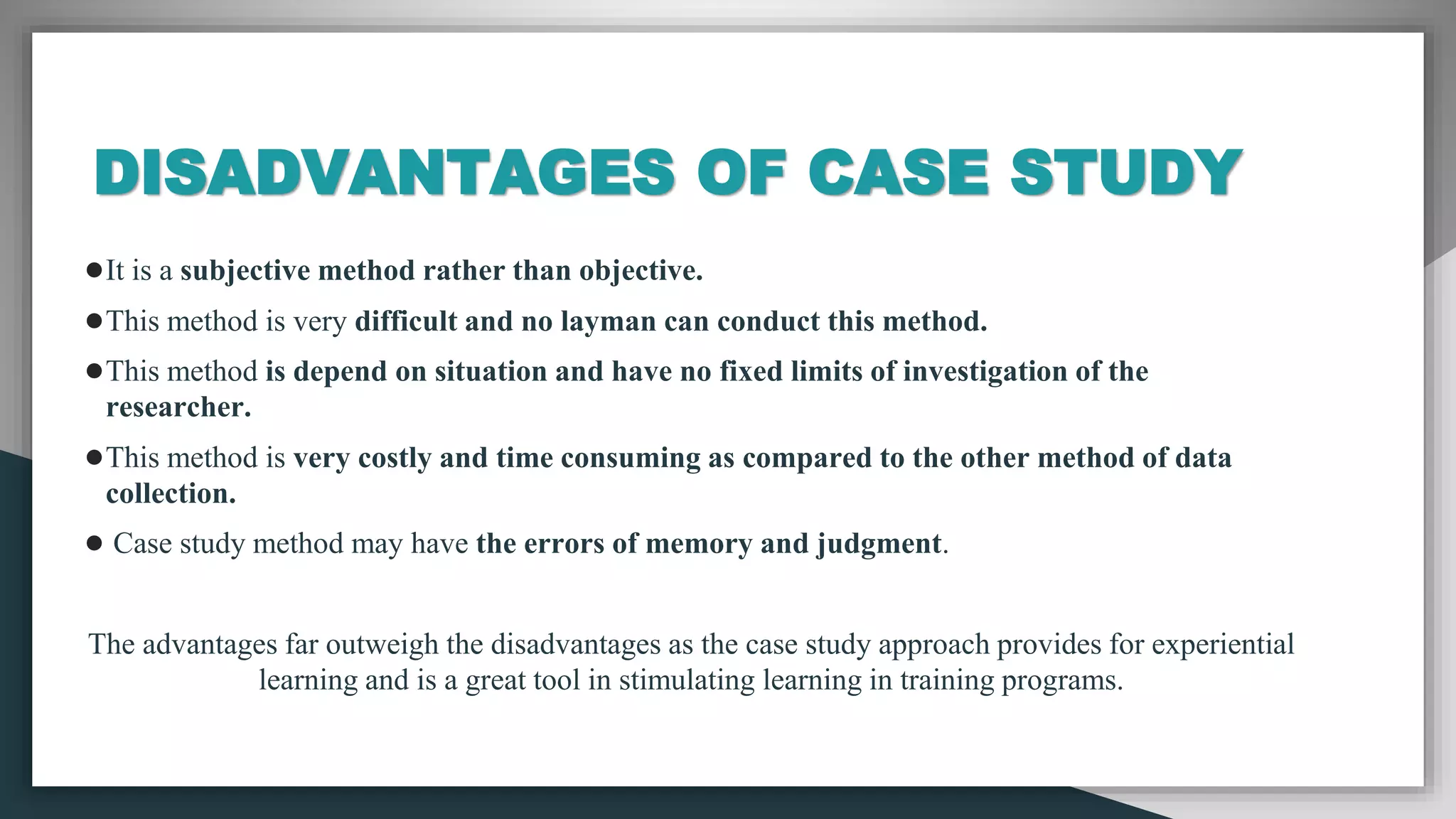
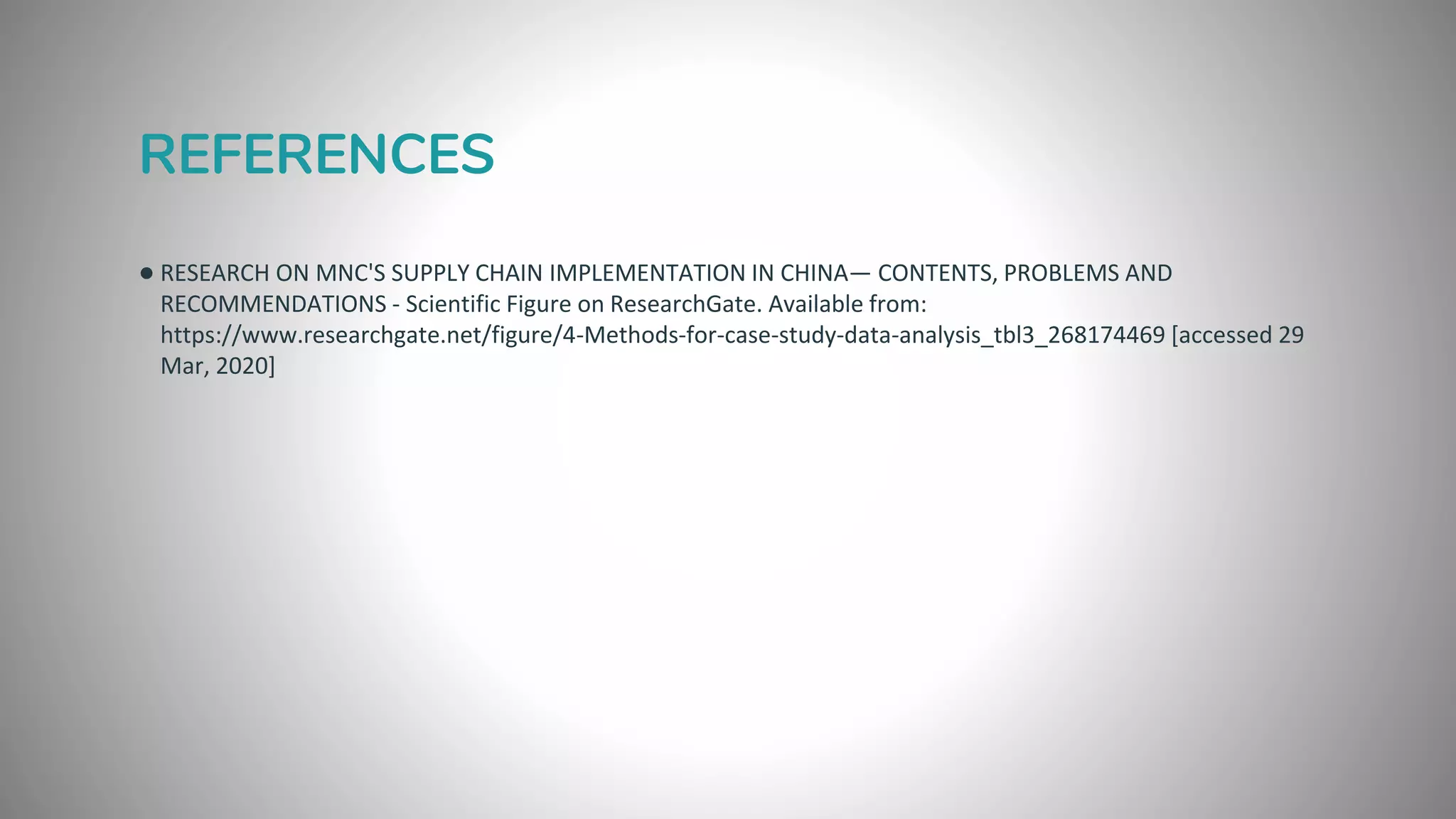
This document discusses qualitative research focusing on case studies, defining various types and classifications according to elements such as time dimension and theory formation. It outlines methodologies, advantages, and disadvantages of case studies while referencing notable scholars in the field like Yin, Stake, and Merriam. The overall goal is to highlight the depth and complexity of case studies as a research method, emphasizing their role in understanding real-life contexts.
Introduction to qualitative research and case studies presented by Rooha Shahid.
Definitions from various scholars like Yin, Stake, and Simons emphasizing complexity, context, and analysis in case studies.
Classification of case studies based on time dimensions: retrospective, diachronic, snapshot, parallel, sequential, and nested studies.
Case studies categorized according to theory formation including theoretical/configurative, disciplined, heuristic, theory-testing, and building block studies.
Different types of case studies as per Yin including explanatory, exploratory, descriptive, intrinsic, instrumental, and collective studies.
Yin's methods for case study analysis including pattern matching, explanation building, and time-series analysis.
Case study methodologies by Yin, Stake, and Merriam, focusing on epistemological commitments, definitions, designs, data gathering, and analysis.
Benefits of case studies: simplifies complex concepts, enhances analytical thinking, teamwork, and provides real-life insights.
Limitations include complexity in case selection, time consumption, subjectivity, and variability in observations and findings.
Cited source relevant to case study data analysis for research on supply chain implementation.
















